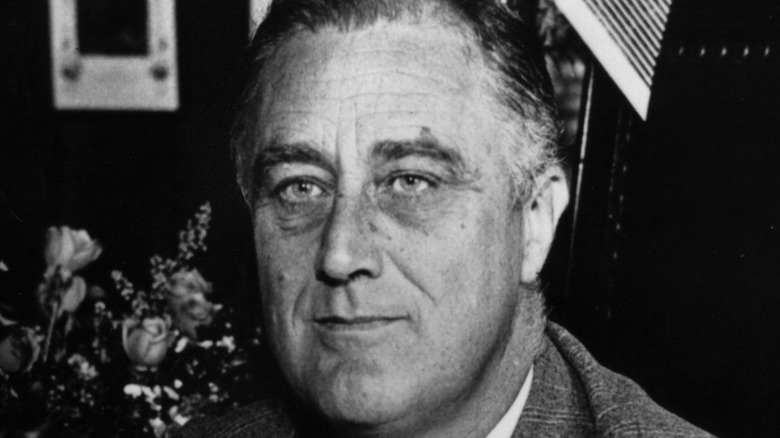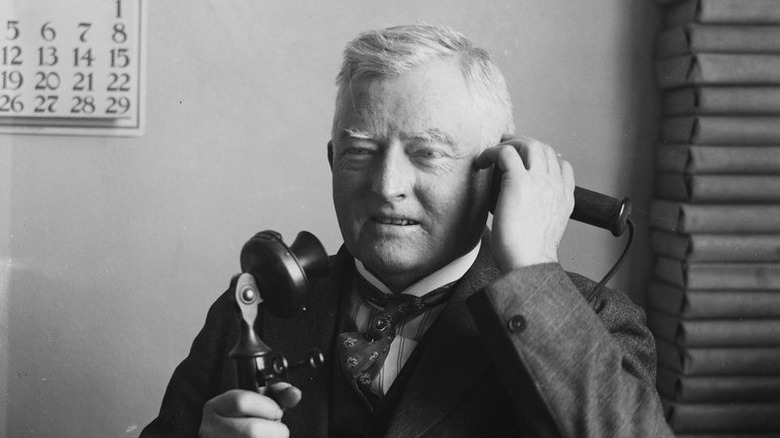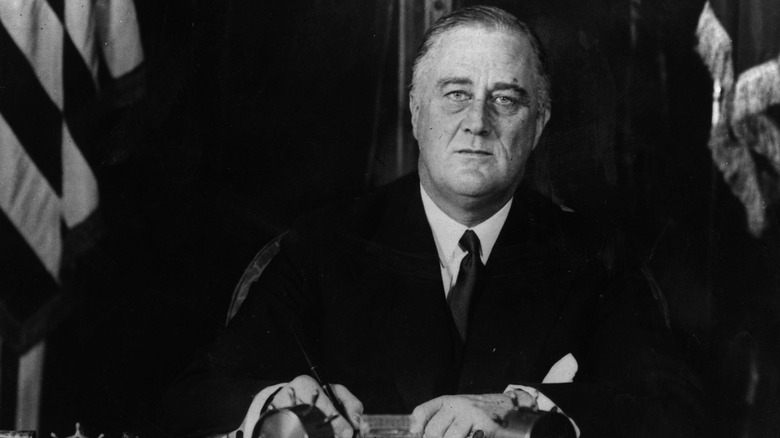Franklin D. Roosevelt's VP Ran Against Him. Here's Why
Franklin D. Roosevelt is noted in American history for having led the nation through difficult moments like the Great Depression and World War II, as well as for being the only U.S. president to serve more than two terms. He also holds a lesser-known distinction: he once ran against his vice president.
Roosevelt's first vice-president was John Nance Garner III. According to History, Garner had decades worth of experience in Congress and even served as Speaker of the House for a time. Garner made an unsuccessful bid for the Democratic nomination in 1932 but wound up with the consolation prize of being brought on to the Democratic ticket as Roosevelt's running mate.
Garner brought with him a wealth of political experience and connections, but the reason Roosevelt chose him was mostly political. At the time, the Democratic Party's base was comprised primarily of two segments: one was comprised of Catholics and immigrants in the north and west, and the Roosevelt camp figured they had that vote locked up, given he was the Governor of New York; the other part of the base was comprised of white southern conservatives. Garner, a conservative from Texas, was brought in, and the strategy worked — Roosevelt and Garner decimated the incumbent Herbert Hoover, who only managed to carry six states, mostly in New England (via The American Presidency Project).
Garner was supportive of Roosevelt's policies ... at first
Upon entering office, John Nance Garner III was supportive of Franklin D. Roosevelt's policies. Per History, it was in this role that Garner was most useful because of his vast experience in Congress. Indeed, the connections he had acquired made him an asset when it came to lobbying in favor of the President's policies.
The policy that is probably most associated with Roosevelt is the New Deal, which was a wide-ranging series of programs and regulations aimed at economic recovery in the wake of the Great Depression (via Britannica). However, Garner was an anti-labor conservative and objected to the amount of federal spending in what was a tent-pole of Roosevelt's presidency.
Garner bit his tongue at first, but he was soon faced with an onslaught of policies with which he vehemently disagreed. They included the Revenue Act that introduced a wealth tax, the Wagner Act that gave workers the right to join unions, and the Social Security Act. Still, the two appeared on a ticket together once again for the 1936 election. If their defeat of Hoover in '32 was a landslide, their defeat of Republican candidate Alf Landon was an unholy beating — Landon was only able to carry two states, Maine and Vermont (via The American Presidency Project). However, the pair's relationship began to fall apart.
President and Vice President become rivals
According to History, after Franklin D. Roosevelt's presidency, some of his most vocal critics were southern conservative Democrats — the very voter-base John Nance Garner III was brought on to appeal to. Unsurprisingly, the working relationship between Roosevelt and Garner was on the skids. A botched attempt at balancing the budget led to a brief recession and caused friction between the two, but the final straw came when Roosevelt attempted to pack the Supreme Court.
Roosevelt planned to institute restrictions on the length of time a justice could serve, calling for the forced retirement of those justices over 70 years and 6 months old if they had put in 10 years of service. Had this worked, Roosevelt would have been able to appoint as many as six justices, which would have helped ease the passing of the New Deal. However, this attempt failed. It was at this point — in addition to the 1938 midterm election in which the president backed mostly liberal-leaning candidates — that Garner stopped biting his tongue over his dislike for some of the President's policies.
In 1939, Garner jumped into the Democratic primary ahead of the 1940 presidential election, but the bid didn't amount to anything. Perhaps helped by the declining state of Europe as the continent plunged into World War II, Roosevelt handily clinched the nomination with 946 delegates to Garner's 61. Roosevelt then brought on a new vice president, Henry Wallace.


